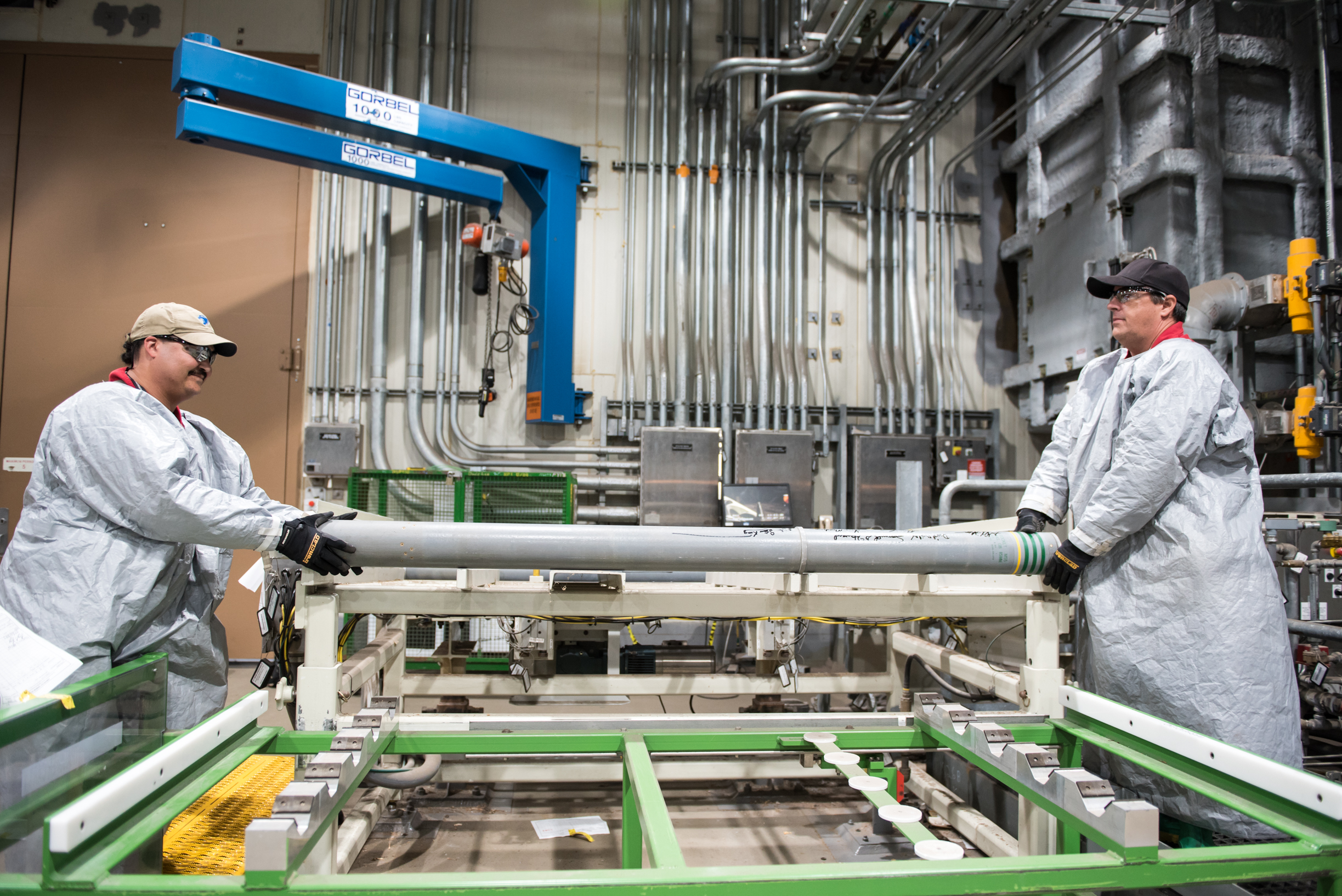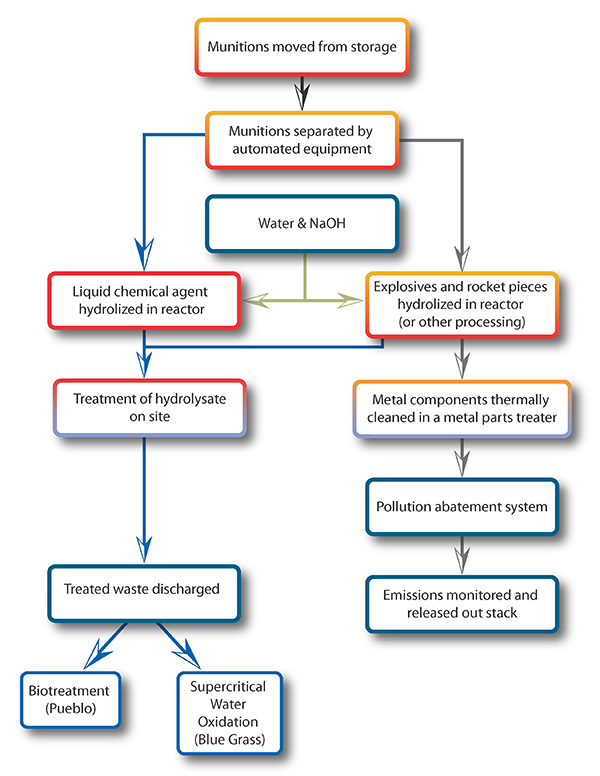US completes destruction of its declared chemical weapons stockpile

The final M55 rocket containing nerve agent GB (sarin) is destroyed at the Blue Grass Chemical Agent-Destruction Pilot Plant in the Blue Grass Army Depot in Kentucky on July 7, 2023. PROGRAM EXECUTIVE OFFICE, ASSEMBLED CHEMICAL WEAPONS ALTERNATIVES/Handout
July 10 (ZFJ) — The last possessor state, America, announced that it finished destroying its declared chemical weapons stockpile on Friday, July 7, marking the first time an international body verified the destruction of an entire category of declared weapons of mass destruction.
The stockpile was declared to the Organisation for the Prohibition of Chemical Weapons, the international body responsible for implementing the Chemical Weapons Convention. The 1997 arms control treaty prohibits its 193 members from developing or stockpiling chemical weapons.
“For more than 30 years, the United States has worked tirelessly to eliminate our chemical weapons stockpile,” said President Joe Biden. “Today, I am proud to announce that the United States has safely destroyed the final munition in that stockpile—bringing us one step closer to a world free from the horrors of chemical weapons.”
The final munition, a M55 rocket filled with the nerve agent sarin, was destroyed at the Blue Grass Army Depot in Kentucky.
The U.S. fulfilled its commitment to the OPCW to destroy its stockpile by Sept. 30 and public law’s requirement to destroy it by Dec. 31. Operations to destroy the stockpile, originally 30,610 tons of chemicals, began in 1986.
“This is a momentous day for the U.S. chemical demilitarization program,” said Secretary of the Army Chrsitine Wormuth. “After years of design, construction, testing, and operations, these obsolete weapons have been safely eliminated.”
The U.S. program destroyed the nerve agents GA (tabun), GB (sarin), and VX, which block nerve conduction by inhibiting the enzyme cholinesterase. The inhibition results in gland and muscle hyperactivity, uncontrollable convulsing, and death by respiratory failure.
Also destroyed were the blister agents: sulfur mustard (HD, HT, H) and lewisite (L). These caused chemical burns; blisters; and irritation in the eyes, skin, respiratory tract, and in the case of L, circulatory system.
Table summarizing characteristics of different nerve and blister agents. RECOVERED CHEMICAL MATERIEL DIRECTORATE/Handout
The chemical weapons destruction program has faced numerous controversies, being decades behind schedule and 2,900% over budget at almost $42 billion, The New York Times reported.
U.S. and OPCW officials celebrated the milestone but recognized continuing challenges. For example, abandoned chemical weapons still remain at large, and the risk of stockpile redevelopment persists.
“Recent uses and threats of use of toxic chemicals as weapons illustrate that preventing reemergence will remain a priority for the Organisation,” said OPCW Director-General Fernando Arias.
Furthermore, Biden called on the four UN members not party to the CWC—Egypt, Israel, North Korea, and South Sudan—to join it. He also said Russia and Syria should comply with the CWC and admit their undeclared chemical weapons programs.
The U.S. used several methods to destroy its stockpiled chemicals.
The U.S. Army initially used incineration, or controlled ignition converting substances to combustion products like water vapor and carbon dioxide, to destroy chemical weapons.
Facing pollution concerns, the Department of Defense was required to turn to alternative methods. In its neutralization process, it used hot water and a caustic (corrosive) compound to break down chemicals. For example, the department added sodium hydroxide to use chemical hydrolysis at Aberdeen Proving Ground in Maryland and Newport Chemical Depot in Indiana.
The DOD opted to use neutralization and biotreatment (use of living organisms like bacteria) to destroy mustard agent at the U.S. Army Pueblo Chemical Depot in Colorado.
At Blue Grass Army Depot, the military used neutralization and supercritical water oxidation to destroy nerve and blister agents. SCWO uses water pushed past its temperature and pressure critical points of 374 C (705 F) and 221 bar (3,205 psi), reducing its density to one-tenth that of normal water. This property separates organic material, destroyed later through oxidation, from salts, which cannot mix with the water.
 Flowchart explaining the chemical munitions destruction process used by the Department of Defense’s Assembled Chemical Weapons Alternatives at Pueblo and Blue Grass. CENTERS FOR DISEASE CONTROL AND PREVENTION/Screenshot
Flowchart explaining the chemical munitions destruction process used by the Department of Defense’s Assembled Chemical Weapons Alternatives at Pueblo and Blue Grass. CENTERS FOR DISEASE CONTROL AND PREVENTION/Screenshot
Due to their significant risk to humans, explosives were handled and washed by robots.
The chemical destruction plants will now undergo waste disposal, decontamination, and decommissioning over the next three to four years, says Michael S. Abaie, DOD’s Assembled Chemical Weapons Alternatives Program Executive Officer.
References
- White House - Statement from President Joe Biden on Completing the Destruction of the United States’ Chemical Weapons Stockpile - https://www.whitehouse.gov/briefing-room/statements-releases/2023/07/07/statement-from-president-joe-biden-on-completing-the-destruction-of-the-united-states-chemical-weapons-stockpile/ (ARCHIVE)
- U.S. Department of Defense - US Completes Chemical Weapons Stockpile Destruction Operations - https://www.defense.gov/News/Releases/Release/Article/3451920/us-completes-chemical-weapons-stockpile-destruction-operations/ (ARCHIVE)
- Organisation for the Prohibition of Chemical Weapons - OPCW confirms: All declared chemical weapons stockpiles verified as irreversibly destroyed - https://www.opcw.org/media-centre/news/2023/07/opcw-confirms-all-declared-chemical-weapons-stockpiles-verified (ARCHIVE)
- U.S. Department of Defense, Program Executive Office, Assembled Chemical Weapons Alternatives - Facts: U.S. Chemical Demilitarization Program Overview - https://www.peoacwa.army.mil/2023/07/07/facts-u-s-chemical-demilitarization-program-overview/ (ARCHIVE)
- Centers for Disease Control and Prevention - Methods Used to Destroy Chemical Warfare Agents - https://www.cdc.gov/nceh/demil/methods.htm (ARCHIVE)
- U.S. Army, Recovered Chemical Materiel Directorate - WHAT ARE CHEMICAL AGENTS AND CHEMICAL WEAPONS? - https://www.cma.army.mil/wp-content/uploads/RCMD-What-Are-Chemical-Agents.pdf (ARCHIVE)
